
Review on Epson Home Cinema 3200 - 4K PRO-UHD 3-Chip Projector featuring HDR by John Roberts

Definitely an upgrade from my old Optoma HD27 1080p DLP projector
Update: I've upgraded my receiver to a Yamaha 385 and my HTPC graphics card to a Geforce 1650 and a pair of 3ft 8k HDMI cables for my and upgraded my computer to PS4. NOW I'm running a full 4k HDR signal from my computer and it's no wonder I had to recalibrate the image. It looked terrible with the settings I set for the 1080p SDR signal. Even resetting to default settings wasn't very good. Here's what I ended up with: Brightness = 44 Contrast = 24 Saturation = 55 Color Temperature = 8 GMCorrection = 4 With the 4k HDR signal I didn't need to adjust the RGBCMY levels at all, the default values gave me a well balanced color chart (from the calibration disc) without color clipping at high frequencies, as was the case with the SDR signal. I still turned off the top 4 white levels because they're too bright, but I think I've figured out a better way to deal with them. Apparently, 4k HDR projectors work better with a lower-gain gray screen, which darkens blacks and reduces the intensity of whites. I'm planning to upgrade to a high contrast gray Qualgear 120" screen with 0.9 gain and tensioners to keep the surface as flat as possible. I have several areas of the screen that aren't properly focused and I suspect this could be because the wall isn't completely flat. In addition, it is almost impossible to get a surface as smooth as stretch screens with latex wall paint. So when I hang a new low gain stretch canvas I get multiple improvements at once plus the bonus of maximizing my screen size potential at a given throw. The move from 104 inches to 120 inches should be noticeably larger and hopefully better to take advantage of this projector's incredibly bright image. With that in mind I've upgraded my rating from 4 stars to 5 stars, I really like it and I'm glad I'm using 3LCD instead of the new DLP. Even upscaled 1080p videos on my computer look way better than on my old 1080p DLP projector. That's significantly better than the projector's native 4k upscaling. Watching 4k HDR videos is awesome! My wife didn't think she would notice a difference and I proved her wrong. She loves it too and now she's not so mad at me for spending so much on upgrades. lol. Original Review for 1080 SDR Entry: Just received this a few days ago and thought I'd leave a review now that I've got everything set up and calibrated. First off, my setup is a small dimmable home theater with a 104 inch DIY screen on a wall painted with a pure white matte latex that should give a gain of around 1.0 and surrounded by black felt trim. a dark curved ceiling that juts well past the top of my screen. The projection distance of the projector is approximately 11 feet 6 inches. First impressions were how much larger this unit is than my old DLP projector, much more than twice the size, and I had to buy a new ceiling mount with brackets that have a diagonal span of about 14 inches to accommodate the mounting screws and to bear the weight 15 pounds. I chose the QualGear PRB-717-WHT mount, which suits my needs well and works great on my curved ceiling. My mounting height was never correct with my DLP projector, which forced me to tilt it a bit and use keystone correction to correct the indirect result. The problem with using keystone correction is that it distorts your image a bit to make it appear square. . With this Epson projector, the lens shifts up and down and side to side so much that, ideally, you never need to use keystone correction. I simply adjusted the angle of the projector and moved the image back onto the screen until I had the entire image square, no keystone required! what works fine. However, my receiver and theater computer currently only support 1080p output. Now that I have a 4k HDR10 capable projector, I plan to spend another $500 to upgrade my graphics card and receiver. Therefore, as a disclaimer, I have not yet tested this projector with a true 4k HDR signal. However, it does an excellent job of upscaling my 4k boosted 1080p signal and easily outperforms my old 1080p DLP projector. The default settings were very impressive, but extremely bright and oversaturated in my short-throw cinema with controlled lighting. Even turning the projector off in ECO mode was still accompanied by brilliant white and stunning color saturation, particularly red and blue. device calibration. FIRST THING TO DO: Align the panel. This allows you to fine tune the alignment between the red, green, and blue images on screen and is critical to creating an accurate image and should be done before adjusting anything else. The green bar is not adjustable, you just need to adjust the red and blue bars to the green bar. I suggest changing the color mode to match the color you are setting, rather than exiting to show a different color. This will help you see where the lines are. Align each corner first, then examine the screen for misalignment at all intersections until you don't see any red or blue lines radiating out anywhere on the screen. For the rest of the calibrations I used the AVS calibration disc which you can download. from their website. First adjust the brightness with the blinking black screen bars, then adjust the contrast with the blinking white/grey screen bars. They adjust your grayscale settings, which are the basis for each image to display correctly and fully. Then you need to adjust the color settings. I did this using the Advanced > RBGCMY setting and the appropriate color histogram from the calibration disk. The yellow and blue bands were fine and showed a clear outline of everything above the dial. Red, green, blue and magenta were clipped in the upper band and it was necessary to lower their saturation levels individually until the upper band had a clear boundary between itself and the next band. I haven't changed the hue or brightness settings (default 50). With all of this adjusted, the resulting image looked much more natural and balanced, with all the greyscale detail from white to the very deep blacks that this projector is capable of displaying. However, I still had one problem: the whites were unbearably bright. The eyes burn so much that very bright scenes or bright objects in a dark scene are uncomfortable to see and definitely cause eye fatigue, not to mention how they differ from the rest of the distract image. Luckily, I found that this projector offered a way to control intensity that I hadn't seen before. In the white balance settings you have the color temperature, which I set to 7, the GM correction, which I set to 0, the custom, which I did not touch, and finally the grayscale, which you must use to adjust the brightness of the toning down white. Screen. This gives you 8 levels of white to adjust, 1 being the darkest and 8 being 100% white. I turned levels 6 to 8 to -50 (as best as possible) and set level 5 to -20, leaving levels 1 to 4 at full brightness. This resulted in a significantly more comfortable viewing experience and reduced eye strain. Here are my basic settings: Brightness: 53 Contrast: 7 colors Saturation: Standard (custom saturation adjustment with RGBCMY settings for a better balance of saturation) Hue: Standard Sharpness: All 0Color Temperature: 7GM Correction: 0Grayscale: Levels 8-6 at -50 , Level 5 at -20, Levels 1-4 at 0 Noise Reduction: 15MPEG Noise Reduction: 2 Super Resolution and Detail Enhancement: Standard RGBBCMY Saturation Settings: R=30 G=40 B=30 C=50 M=30 Y=50 . (Default 50) Conclusions. So far I'm very happy with this projector and glad there are reasonable adjustment settings because it really wasn't acceptable with the factory settings. I still don't understand why whites were so damn bright even in Eco mode. The white objects were almost blinding and made me feel like I was seeing double and had trouble focusing on the screen. Luckily, the grayscale settings helped fix that. It could almost use a setting below -50 for the top three white levels. I really like the new level of detail and total lack of rainbow effects that I've experienced with DLP projectors, it's one of the main reasons I bought this Epson and not Optoma's newer 4K DLP projector. I'm very glad the rest of my system has been upgraded to HDR10 so I can get the full potential of this projector but for now even with 1080p input it outperforms my old DLP in picture quality.
- Excellent design
- Unreliable
New products
Comments (0)
Top products in 📽️ Video Projectors & Accessories
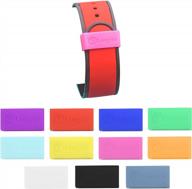
11 Pack Magic Band Protectors: Multi-Color Smart Watch Security Bands For Fitbit Charge, Charge HR, Garmin Vivofit, Disney Magic Band 2.0 & More

49 Review
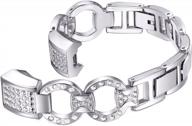
Silver Rhinestone Compatible Metal Bands For Fitbit Alta And Alta HR

38 Review
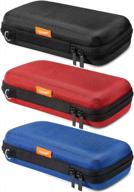
GLCON Hard EVA Protective Case - Small Travel Case With Mesh Inner Pocket & Zipper Enclosure For Charging Cable, Power Bank, Hard Drive, Cell Phone, External Battery Storage - 3 Colors Available

38 Review
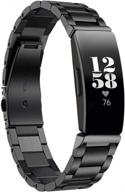
Stainless Steel Metal Replacement Band Strap Compatible With Fitbit Inspire HR/Fitbit Inspire 2 Fitness Tracker (Black)

38 Review
Another interesting products
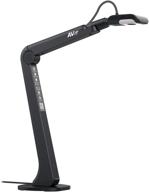
📸 AVer M5 Document Camera: USB Webcam for Remote Video Conferencing - HD for PC, Mac, Chromebook, Zoom, and More - Ideal for Distance Learning, Classroom Teaching, Recording, Working & More

3 Review
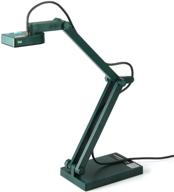
IPEVO V4K: Ultra High Definition 8MP USB Document Camera - Perfect for Live Demos, Web Conferencing, Distance Learning & Remote Teaching on Mac OS, Windows, and Chromebook

3 Review
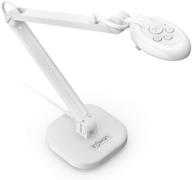
INSWAN INS 2 Dual Mode Supplemental Conferencing

3 Review

📷 CZUR Shine800-Pro: High-Speed Document Camera for Mac and Windows with OCR Function

10 Review

